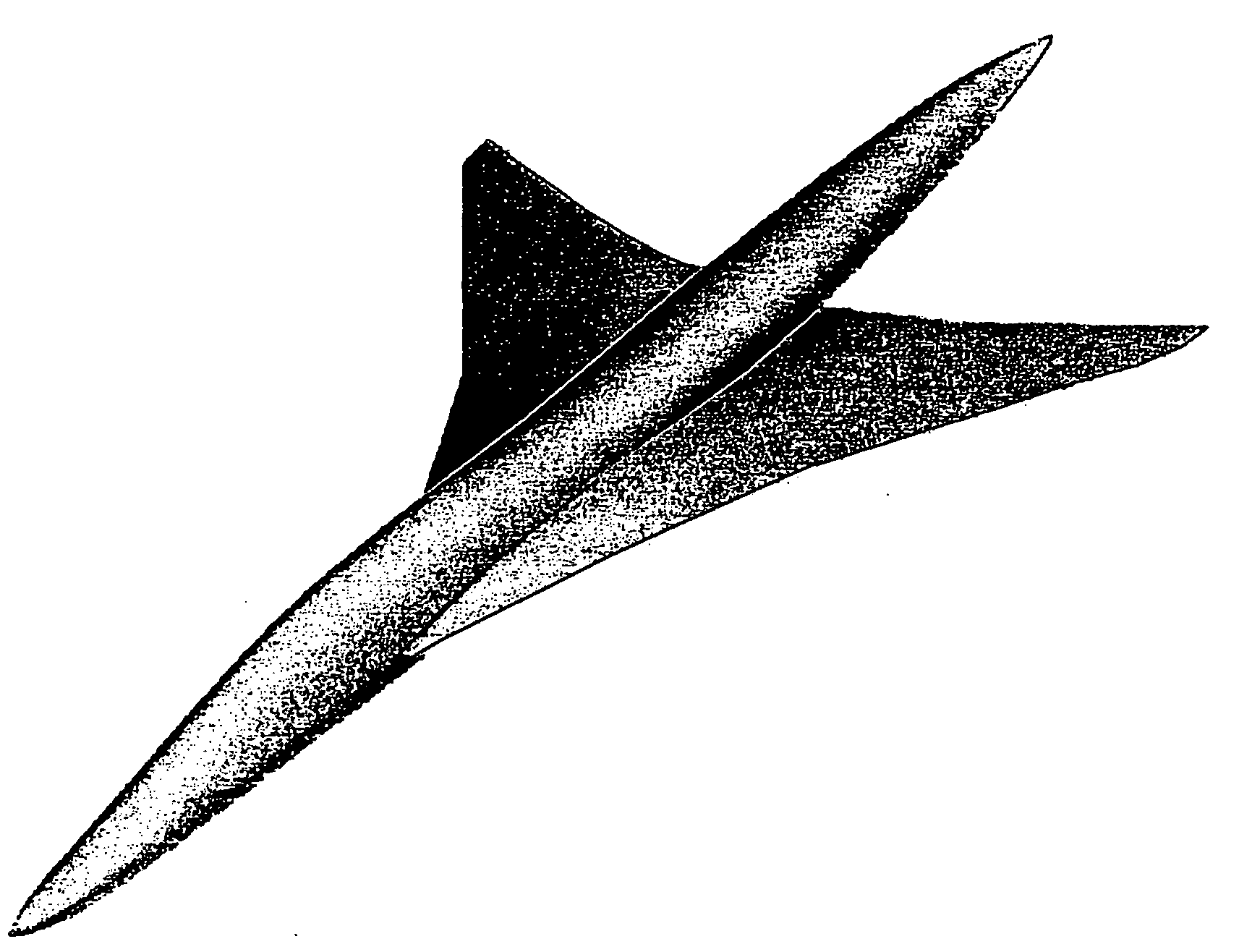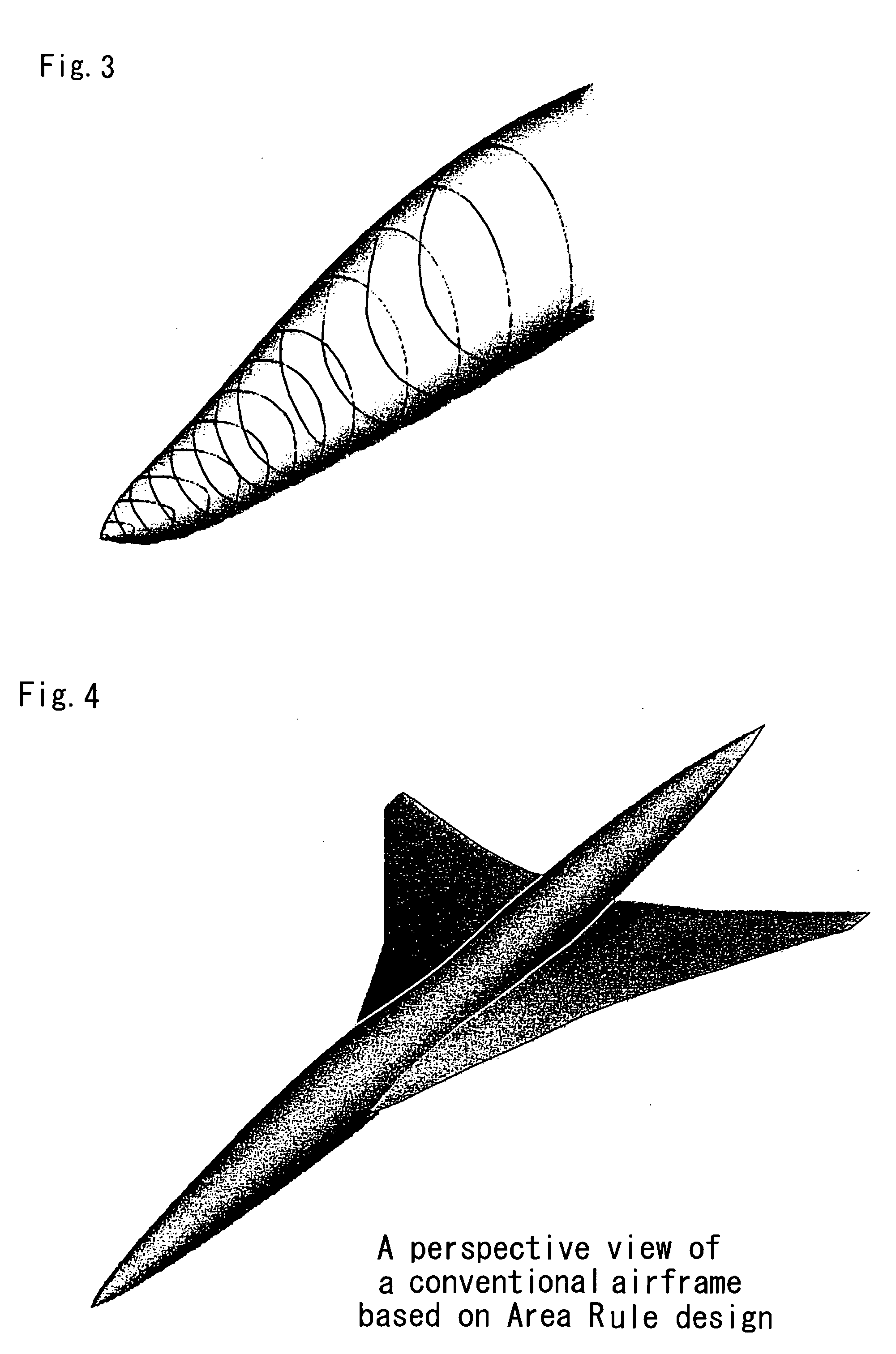Method for determination of fuselage shape of supersonic aircraft, and fuselage front section shape
a supersonic aircraft and fuselage technology, applied in the direction of fuselages, airflow influencers, transportation and packaging, etc., can solve the problems of limited supersonic flight, difficult commercialization of supersonic passenger aircraft, and considerable airframe drag, so as to reduce the suppress the increase in wave drag, and reduce the effect of overall airframe wave drag
- Summary
- Abstract
- Description
- Claims
- Application Information
AI Technical Summary
Benefits of technology
Problems solved by technology
Method used
Image
Examples
embodiment 1
[0039] An embodiment of the invention is described. Different methods are used to determine the fuselage lower-surface shape and the fuselage upper-surface shape, whose upper and lower boundary is defined for each fuselage cross-section by the horizontal line including two points at which the fuselage width from the bilateral symmetry plane is maximum. The upper cross-sectional shape of the fuselage front section, from the fuselage tip to the wing-fuselage juncture, is taken to be a semi-ellipse; the lower-surface shape is taken to be a semicircle of radius equal to the radius in the side directions of the above cross-sectional shape. As shown in FIG. 6, the fuselage shape from the fuselage tip to the wing-fuselage juncture (X=0 to L1), taking the axial direction length of the fuselage to be L, is determined as follows. In the following, the axial direction coordinate X is expressed by a dimensionless coordinate (x=X / L1), and as shown in FIG. 7, at the position at which X=L1, that i...
PUM
 Login to View More
Login to View More Abstract
Description
Claims
Application Information
 Login to View More
Login to View More - R&D
- Intellectual Property
- Life Sciences
- Materials
- Tech Scout
- Unparalleled Data Quality
- Higher Quality Content
- 60% Fewer Hallucinations
Browse by: Latest US Patents, China's latest patents, Technical Efficacy Thesaurus, Application Domain, Technology Topic, Popular Technical Reports.
© 2025 PatSnap. All rights reserved.Legal|Privacy policy|Modern Slavery Act Transparency Statement|Sitemap|About US| Contact US: help@patsnap.com



